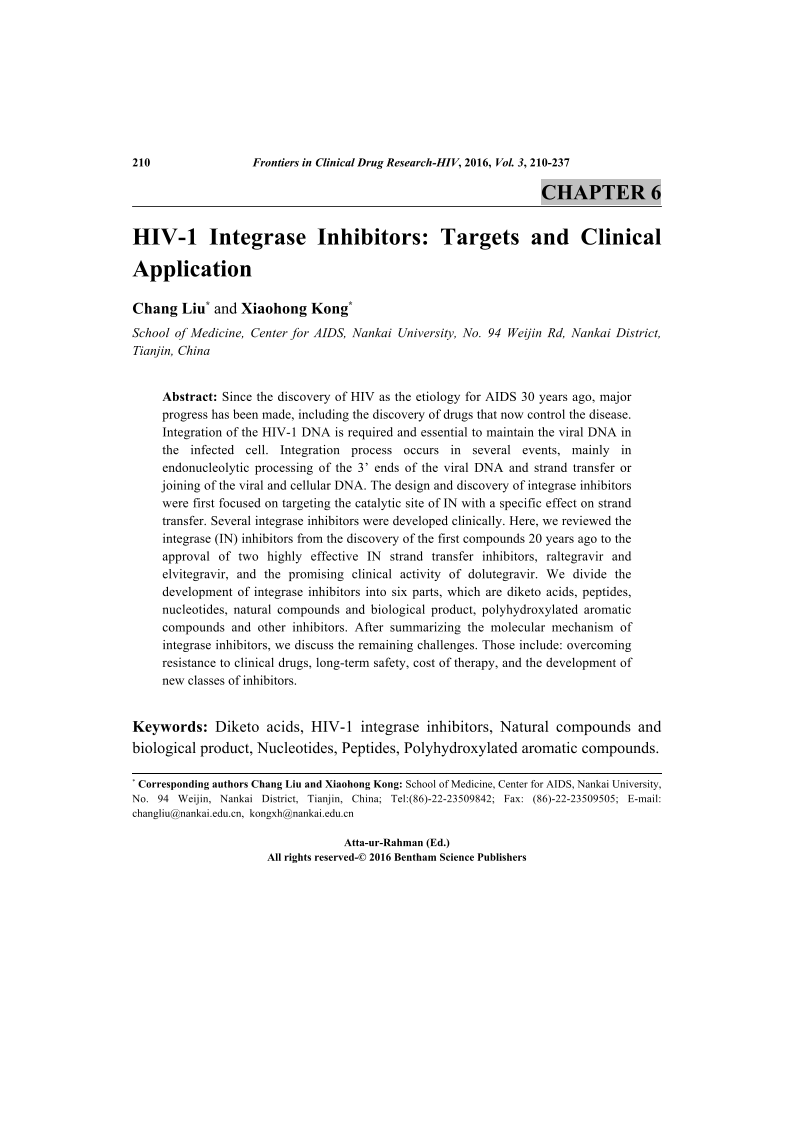HIV-1 Integrase Inhibitors: Targets and Clinical Application

- Authors: Chang Liu1, Xiaohong Kong2
-
View Affiliations Hide Affiliations1 School of Medicine, Center for AIDS, Nankai University, No. 94 Weijin, Nankai District, Tianjin, China 2 School of Medicine, Center for AIDS, Nankai University, No. 94 Weijin, Nankai District, Tianjin, China
- Source: Frontiers in Clinical Drug Research - HIV: Volume 3 , pp 210-237
- Publication Date: December 2016
- Language: English
HIV-1 Integrase Inhibitors: Targets and Clinical Application, Page 1 of 1
< Previous page | Next page > /docserver/preview/fulltext/9781681082295/chapter-6-1.gif
Since the discovery of HIV as the etiology for AIDS 30 years ago, major progress has been made, including the discovery of drugs that now control the disease. Integration of the HIV-1 DNA is required and essential to maintain the viral DNA in the infected cell. Integration process occurs in several events, mainly in endonucleolytic processing of the 3' ends of the viral DNA and strand transfer or joining of the viral and cellular DNA. The design and discovery of integrase inhibitors were first focused on targeting the catalytic site of IN with a specific effect on strand transfer. Several integrase inhibitors were developed clinically. Here, we reviewed the integrase (IN) inhibitors from the discovery of the first compounds 20 years ago to the approval of two highly effective IN strand transfer inhibitors, raltegravir and elvitegravir, and the promising clinical activity of dolutegravir. We divide the development of integrase inhibitors into six parts, which are diketo acids, peptides, nucleotides, natural compounds and biological product, polyhydroxylated aromatic compounds and other inhibitors. After summarizing the molecular mechanism of integrase inhibitors, we discuss the remaining challenges. Those include: overcoming resistance to clinical drugs, long-term safety, cost of therapy, and the development of new classes of inhibitors.
-
From This Site
/content/books/9781681082295.chapter-6dcterms_subject,pub_keyword-contentType:Journal -contentType:Figure -contentType:Table -contentType:SupplementaryData105

